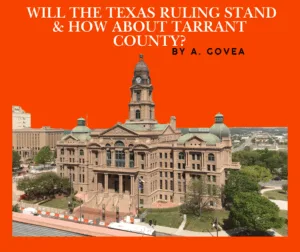By Sunita Sohrabji
Aug 15, 2024
Formal group photograph of the Supreme Court as it was been comprised on June 30, 2022 after Justice Ketanji Brown Jackson joined the Court. The Justices are posed in front of red velvet drapes and arranged by seniority, with five seated and four standing. Seated from left are Justices Sonia Sotomayor, Clarence Thomas, Chief Justice John G. Roberts, Jr., and Justices Samuel A. Alito and Elena Kagan. Standing from left are Justices Amy Coney Barrett, Neil M. Gorsuch, Brett M. Kavanaugh, and Ketanji Brown Jackson. (Credit: Fred Schilling, Collection of the Supreme Court of the United States)

The public’s view of the US Supreme Court’s credibility has plummeted to the lowest levels ever recorded, as voters perceive recent major decisions to be fueled by partisanship.
Of particular concern is the 2022 Dobbs decision, in which the justices ruled 6-3 that abortions were not guaranteed by the Constitution. In another ruling earlier this summer, the court ruled there was vast immunity from criminal prosecution for presidents, effectively expunging several criminal cases against Donald Trump. The former president was able to “stack” the highest court in the nation with three appointees: Justices Neil Gorsuch, Brett Kavanaugh, and Amy Coney Barrett.
“This is a public institution that is ripe for reform,” said Brennan Center President Michael Waldman, at a news briefing Aug. 13. Waldman also served on President Joe Biden’s Commission on the Supreme Court. “It is an institution by its very nature, with lifetime terms unelected, that is often immune from accountability.”
“But that accountability moment is now,” said Waldman, noting that justices have faced a large number of ethics controversies and other scandals. “This rattles public confidence,” he added.
Term Limits
Two weeks ago, President Joe Biden proposed sweeping changes for the Supreme Court, among them term limits of 18 years. Biden also called on Congress to pass legislation requiring justices to disclose gifts, refrain from public political activity, and recuse themselves from cases in which they or their spouses have financial or other conflicts of interest.
Judge Diane Wood, who was appointed by President Bill Clinton to serve on the 7th Circuit Court of Appeals, echoed Waldman’s remarks, noting that there was a tradition of Supreme Court justices being “neutral arbiters,” using the Constitution to guide their decisions. That no longer seems to be the case, said Wood, currently the director of the American Law Institute, and Senior Lecturer at the University of Chicago Law School.
“This court is one more committee of the Senate, or something like a political committee. We don’t really need one more political committee, we’ve got plenty of them.”
Public Losing Confidence
“But we need something to assure people that it is actually legal principles that are driving these decisions,” said Wood. “When the Supreme Court decides a case, the losing party needs to feel that it got a fair hearing, that there was some objectivity to the way the decision was made. And I do think people are losing that confidence,” she said, adding that the Court needs to regain its “public legitimacy.”
Cristina M. Rodríguez, Leighton Homer Surbeck Professor of Law at Yale Law School, and former co-chair of the Commission on the Supreme Court, noted that while she served on the Commission, she heard a lot of varying views about how the Court could be mended.
Republican Party Violating Norms
“Fundamentally, the calls for court reform stem from alarm at what the conservative supermajority on the Court has been doing to the law, and the sense that their power is way out of proportion to the outcomes of the political process over the last several decades,” she said.
There is a sense that the Republican Party has violated norms in the nominations process over the last several years, refusing to meet Merrick Garland, President Barack Obama’s nominee for the seat vacated by the late Justice Antonin Scalia, and rushing through Amy Coney Barrett, Trump’s replacement for Justice Ruth Bader Ginsburg, said Rodriguez.
“It was so striking at the Commission how, across ideological lines, there was a sense of something needing to be done, that something was out of whack. In one sense, the country was moving in one direction and the Court was moving rapidly in another direction, which creates a real crisis of legitimacy,” she said.
Trajectory of the Court
Alicia Bannon, director of the Judiciary Program at the Brennan Center for Justice, explained how Supreme Court term limits would work. Justices would be divided into two phases. In the first 18-year phase, they would serve as they do now. In the second phase of service, the justices’ duties would change. “They would still be judges, they would still get paid, they would still hold their offices, but the duties of that senior Supreme Court justice would be different,” said Bannon, noting, for example, they could serve on lower courts or hear a limited number of cases, but not the full court docket.
Term limits would offer a regularized appointment process. Every two years a new vacancy would open on the Court, so presidents would get an opportunity in each term to put two new justices on the bench.
“It restores us much closer to historical norms in terms of how long justices were sitting on the bench,” said Bannon, noting that justices today serve about a decade longer than they have since the 1960s.
“It also creates a dynamic where the Court is more closely linked to the public because presidents would have equal opportunities in a four-year term to influence the trajectory of the Court,” she said.






